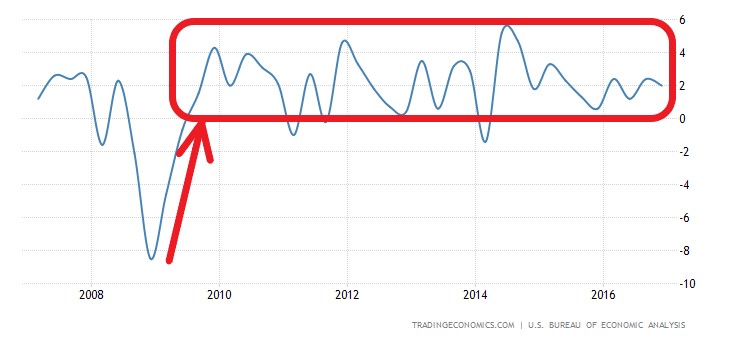Real World Example: Expansionary Fiscal Policy
IB Economics syllabus: Macroeconomics (expansionary fiscal policy)
Using one or more real world examples is essential in your IB Economics Paper 1 exams, part b), 15 mark question to score top marks. If you get a question related to expansionary fiscal policy (for example in fighting unemployment or to boost economic growth) you can use the following real world example:
Short version
During the Financial Crisis, the Obama administration boosted government expenditure by $831 billion in order to decrease unemployment and increase economic growth at the time of the largest demand-deficient recession since the Great Depression. This is known as a fiscal stimulus, or an example of expansionary fiscal policy as higher government spending boosts aggregate demand (AD) as it is a component of it, leading to economic growth and lower unemployment.
Detailed version: if you really want to understand
American Recovery and Reinvestment Act (ARRA)
During the Great Financial Crisis, the Obama administration decided to boost aggregate demand (AD) in order to reduce unemployment and end the recession, by generating economic growth. The ARRA therefore is a perfect real world example for an expansionary fiscal policy, as ultimately it led to a government expenditure increase of $831 billion.
This, combined with expansionary monetary policy (see my post about it here) proved successful in restarting the US economy: boosting economic growth and reducing unemployment in the following years. Look at the unemployment and economic growth graphs below.
Figure 2: Unemployment Rate in the US During and Following the Financial Crisis (2007-2017)
Figure 2: Economic Growth Rate in the US During and Following the Financial Crisis (2007-2017)
Disadvantages of a fiscal stimulus (=expansionary fiscal policy)
While the above benefits are certainly undeniable (heads up, evaluation point!), the US national debt had also increased substantially. Just check out the below debt-to-GDP ratio graph.
Figure 3: Government Debt-to-GDP Ratio in the US During and Following the Financial Crisis (2007-2017)
Furthermore, critics claim that ARRA has proven inefficient due to high levels of bureaucracy, leading to no positive effects on unemployment. Indeed, unemployment did continue increasing for the years following the introduction of ARRA only to go below pre-Financial Crisis levels over 6 years after ARRA. Also, since the policy was combined with expansionary monetary policy, it is extremely hard to judge its efficiency in restarting the economy, but it is safe to say that this expansionary monetary policy must have greatly contributed to the economic recovery of the US. Just as it did contribute to higher national debt…
Source of image: Unsplash.com and tradingeconomics for the diagrams

Do you need a little boost with IB Economics?
Check out my IB Economics Revision Notes (Study Guide)
Or get personalized help from an examiner: check out private lessons.
Looking for more articles?










